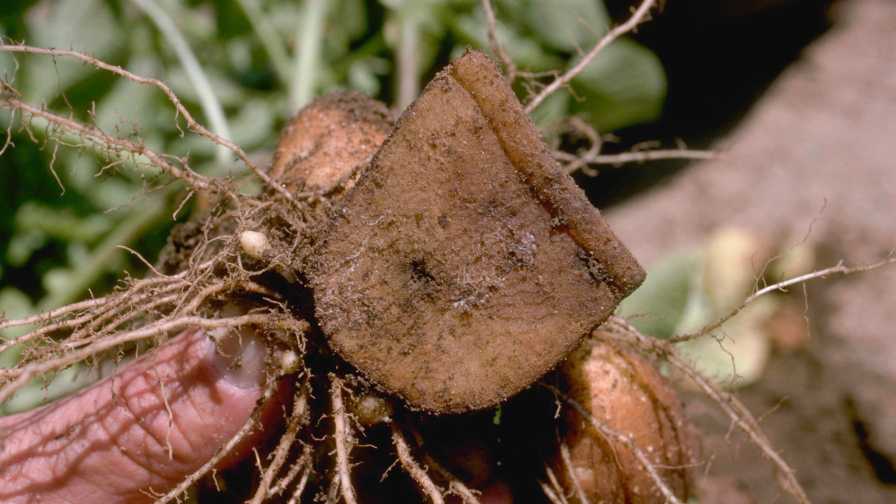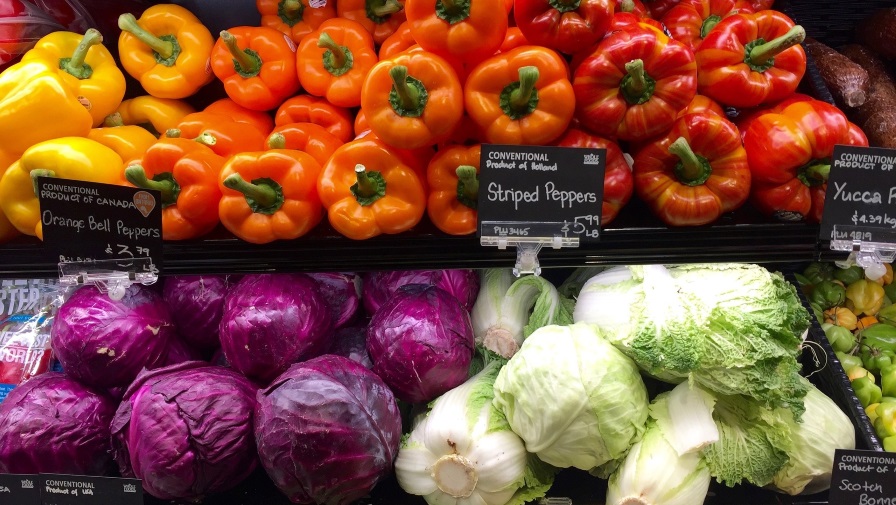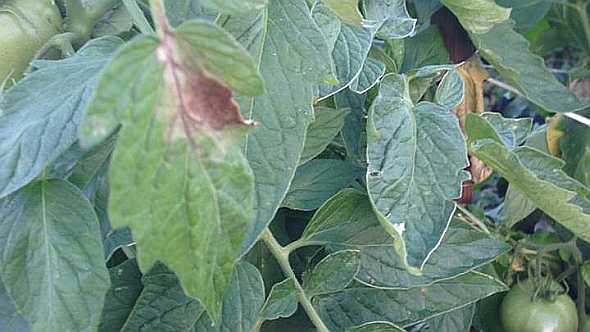Late Blight Alert Blares for Vegetable Growers in Southwest Florida

When dealing with late blight in potatoes, remove infected tubers at the first sign of infection.
Photo by Howard F. Schwartz
Vegetable growers in Southwest Florida are on the lookout for late blight — the deadly plant pathogen — which was recently found in potato plantings around Immokalee.
Gene McAvoy, Associate Director of Stakeholder Relations for the UF/IFAS Southwest Florida Research and Education Center, confirms samples found and submitted by scouts from Glades Crop Care were positively identified as the plant disease.
Recent weather conditions, including foggy mornings, abundant dew, and rainfall associated with recent weather fronts have been conducive for disease development.
McAvoy says both potato and tomato growers should be vigilant. Below, he provides what producers should know about late blight and what to watch for.
Disease Specs
Late blight is caused by the fungus-like oomycete Phytophthora infestans, which is a pathogen of potato and tomato. This disease can spread quickly and devastate a tomato or potato field within a few weeks if not properly controlled. Velvety, white fungal growth may appear on the lower surface of affected leaflets early in the morning before leaves dry and/or in the lower canopy.
Identification
Late blight symptoms on leaves appear as irregularly shaped brown to purplish lesions with indefinite border lesions that can span veins. The lesions may be seen any time of day, on any stage of plant growth, and on leaves of any age.
On stems, purplish lesions may be found anywhere on the stem. Cottony white growth of fungus on stems with lesions can often be seen early in the morning and/or in the lower canopy.
Survival and Spread
The disease thrives under cool and wet conditions. Temperatures between 50°F and 80°F combined with moist conditions such as rain, fog, heavy dews, or relative humidity above 90% are conducive for disease development. Night temperatures in the mid-50s, with daytime temperatures from the mid-50s to mid-70s, are ideal for this disease.
Inoculum can originate from diseased seed tubers, cull piles, and volunteers, as well as infected plantings of potatoes or tomatoes. For tomatoes, infected transplants can serve as a source of inoculum.
Since the disease can spread so rapidly, growers should scout their fields thoroughly each day, especially when cool and wet conditions conducive to disease development prevails.
Management Methods
Currently, fungicides are the most effective means of controlling late blight and will remain the primary tool until cultivars with resistance to this disease become available. Fungicides slow the rate at which the disease develops in the field by creating a protective barrier on the foliage.
Just applying a chemical, however, does not necessarily equate with effective disease control. Relative effectiveness of a product, coverage, and timing must be factored into the equation for maximum benefit.
Numerous fungicide products are registered for late blight control. Protectants, as the name implies, protect foliage from infection by spores. Protectant chemicals must be well distributed over the leaf surface and must be applied before spores land on leaves. They are ineffective against established infections.
Protective applications of chlorothalonil are your first line of defense for managing late blight. Timing is critical — applications must be made when conditions are conducive for disease development and before infection occurs.
Systemic products become distributed locally within plant tissues and protect foliage from infection by spores. They may kill some established infections and may suppress production of new spores. Even a short break in spray schedules, despite what is said regarding some of the newer fungicides, can result in a dramatic increase in blight under the proper conditions.
Consult current UF/IFAS recommendations for all labeled fungicides for the control of late blight in Florida.










